The leaders of South Korea and Japan agreed to accelerate efforts to mend ties frayed over Japan’s past colonial rule of the Korean Peninsula as they held their countries’ first summit in nearly three years on the sidelines of the UN General Assembly, both governments announced yesterday.
The meeting occurred after Tokyo denied Seoul’s earlier announcement they had agreed on the summit, in a sign of the delicate nature of their current relations.
During their 30-minute meeting on Wednesday in New York, South Korean President Yoon Suk-yeol and Japanese Prime Minister Fumio Kishida shared the need to improve bilateral ties and agreed to instruct their respective diplomats to step up talks for that, Yoon’s office said in a statement.
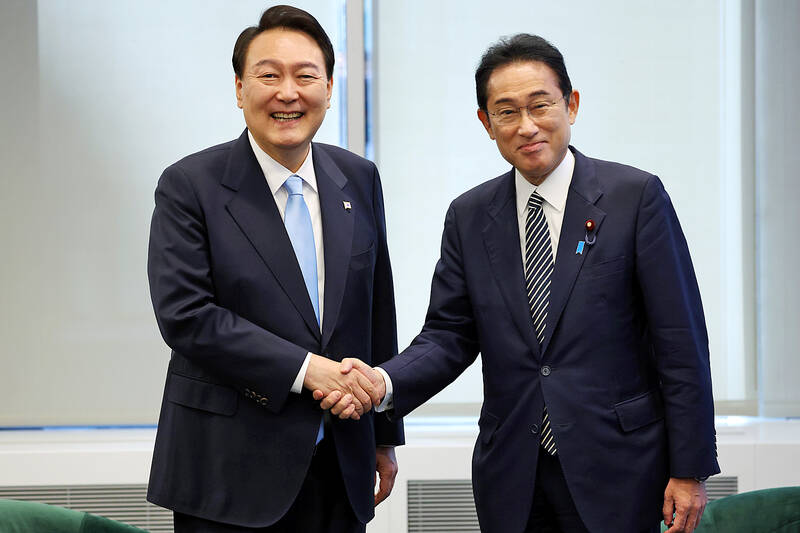
Photo: EPA-EFE
Kishida’s office confirmed the meeting.
A separate Japanese Ministry of Foreign Affairs statement said the two leaders agreed to promote cooperation between the two countries as well as with the US.
It said the leaders shared the need to restore sound relations.
Yoon’s office said the two leaders also jointly expressed serious concerns about North Korea’s recent legislation authorizing the pre-emptive use of nuclear weapons in certain conditions and the North’s reported moves to conduct its first nuclear test in five years.
The Japanese foreign ministry said Kishida and Yoon agreed to further cooperate in their response to North Korea.
The South Korean and Japanese governments said Yoon and Kishida agreed to continue communications between them.
However, it was not immediately known how meaningful the two leaders’ conversation in New York was to address major sticking points in bilateral ties that suffered their biggest setback in recent years when the two countries were governed by their predecessors.
In 2018, South Korea’s top court ruled that two Japanese companies — Nippon Steel and Mitsubishi Heavy Industries — must compensate Koreans who had been forced to work during Japan’s 1910-1945 colonial occupation.
The companies and the Japanese government have dismissed the rulings, arguing that all compensation issues were already settled under a 1965 treaty that normalized bilateral ties, and included Tokyo’s provision of hundreds of millions of US dollars to Seoul in economic assistance and loans.
The dispute prompted the two governments to downgrade each other’s trade status and South Korea to threaten to abandon an intelligence-sharing deal.
Former Korean forced laborers and their supporters, for their part, pushed for the forced sales of the Japanese companies’ assets in South Korea.
It is unclear if Wednesday’s summit would yield progress in efforts to improve bilateral ties, as some of the former forced laborers in the court cases maintain that Japanese companies must first consent to the South Korean court rulings if they want to resolve the legal disputes.
The strained ties have complicated a US push to bolster its trilateral security alliance with Seoul and Tokyo — two of its key regional allies where it deploys a total of 80,000 troops — to better deal with rising Chinese influence and North Korean nuclear threats.
On Wednesday, US President Joe Biden met Yoon and Kishida separately on the margins of the UN General Assembly.
In their talks, Biden and Yoon reaffirmed their commitment to strengthen their countries’ military alliance, and ensure close cooperation to address the North Korean threat.
Biden and Kishida discussed the importance of advancing a free and open Indo-Pacific, emphasizing the importance of strengthening and modernizing their security alliance, the White House said.
South Korea and Japan have been seeking better ties since Yoon’s inauguration in May. The Yoon-Kishida meeting was the first summit between the countries since December 2019, when then-South Korean president Moon Jae-in and then-Japanese prime minister Shinzo Abe met in China on the sidelines of a South Korea-Japan-China summit.
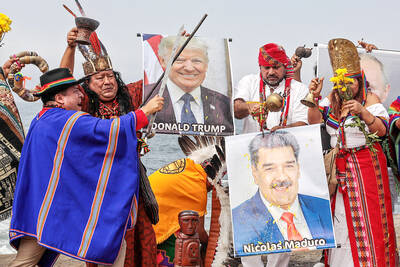
Shamans in Peru on Monday gathered for an annual New Year’s ritual where they made predictions for the year to come, including illness for US President Donald Trump and the downfall of Venezuelan President Nicolas Maduro. “The United States should prepare itself because Donald Trump will fall seriously ill,” Juan de Dios Garcia proclaimed as he gathered with other shamans on a beach in southern Lima, dressed in traditional Andean ponchos and headdresses, and sprinkling flowers on the sand. The shamans carried large posters of world leaders, over which they crossed swords and burned incense, some of which they stomped on. In this
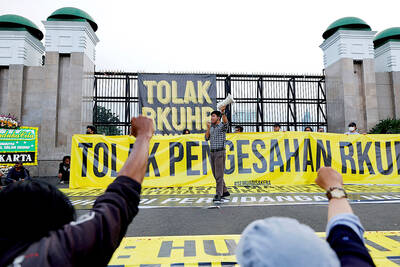
Indonesia yesterday began enforcing its newly ratified penal code, replacing a Dutch-era criminal law that had governed the country for more than 80 years and marking a major shift in its legal landscape. Since proclaiming independence in 1945, the Southeast Asian country had continued to operate under a colonial framework widely criticized as outdated and misaligned with Indonesia’s social values. Efforts to revise the code stalled for decades as lawmakers debated how to balance human rights, religious norms and local traditions in the world’s most populous Muslim-majority nation. The 345-page Indonesian Penal Code, known as the KUHP, was passed in 2022. It
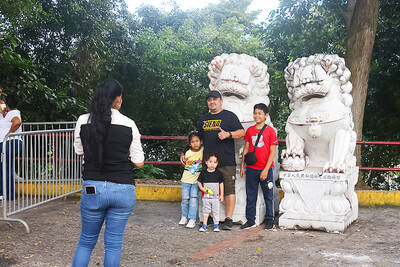
Near the entrance to the Panama Canal, a monument to China’s contributions to the interoceanic waterway was torn down on Saturday night by order of local authorities. The move comes as US President Donald Trump has made threats in the past few months to retake control of the canal, claiming Beijing has too much influence in its operations. In a surprising move that has been criticized by leaders in Panama and China, the mayor’s office of the locality of Arraijan ordered the demolition of the monument built in 2004 to symbolize friendship between the countries. The mayor’s office said in
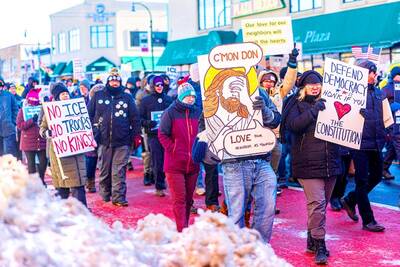
‘TRUMP’S LONG GAME’: Minnesota Governor Tim Walz said that while fraud was a serious issue, the US president was politicizing it to defund programs for Minnesotans US President Donald Trump’s administration on Tuesday said it was auditing immigration cases involving US citizens of Somalian origin to detect fraud that could lead to denaturalization, or revocation of citizenship, while also announcing a freeze of childcare funds to Minnesota and demanding an audit of some daycare centers. “Under US law, if an individual procures citizenship on a fraudulent basis, that is grounds for denaturalization,” US Department of Homeland Security Assistant Secretary Tricia McLaughlin said in a statement. Denaturalization cases are rare and can take years. About 11 cases were pursued per year between 1990 and 2017, the Immigrant Legal Resource